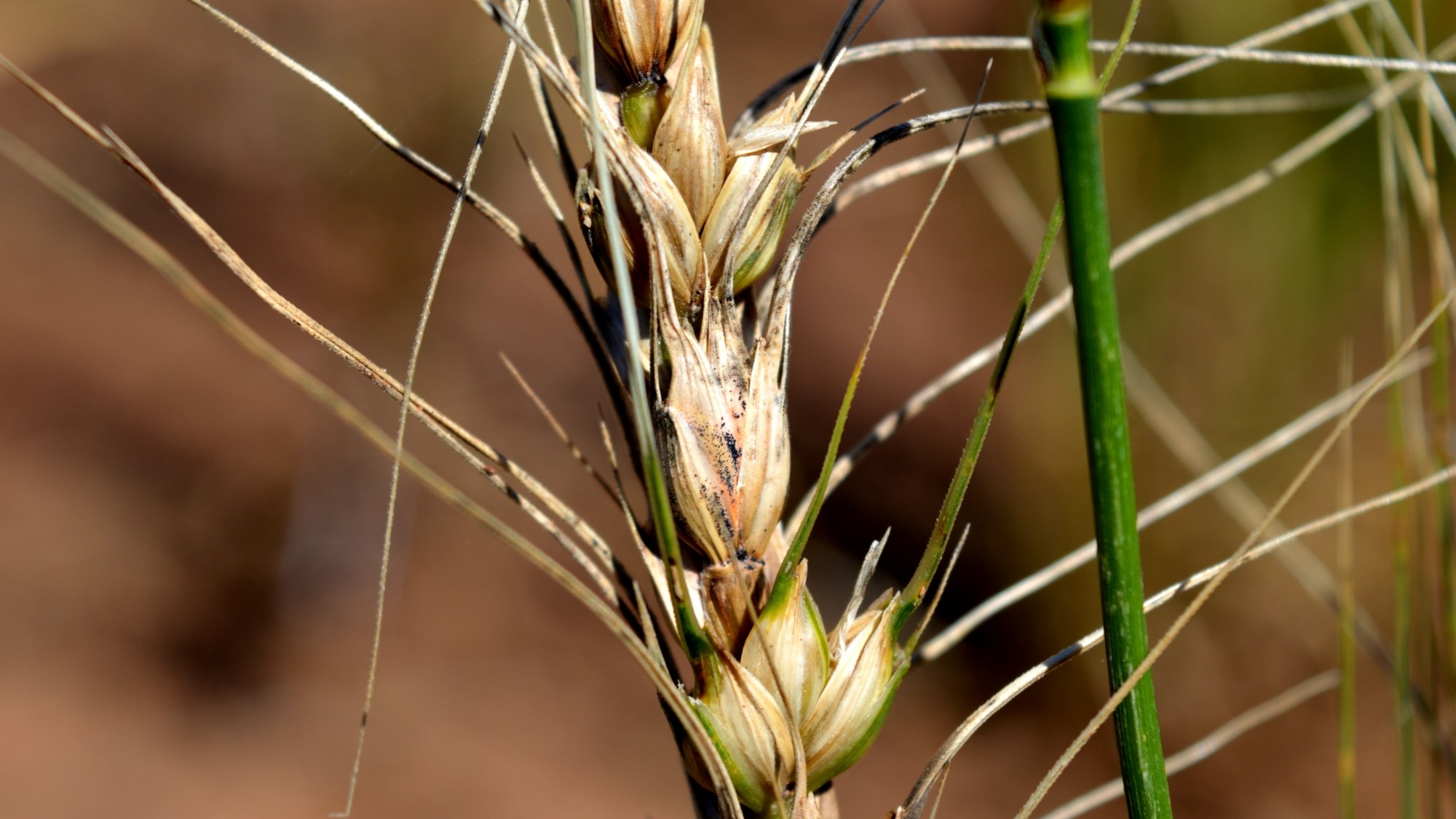UK researcher unraveling the mystery of a potential global agricultural threat in Kentucky and beyond
UK researcher unraveling the mystery of a potential global agricultural threat in Kentucky and beyond


In 2011, agricultural science turned its focus to a major concern - the detection of wheat blast in the United States. Fast-acting and potentially devastating, wheat blast is caused by a fungal pathogen, Pyricularia oryzae that threatens food safety and security. This was a significant development as this serious agricultural disease was previously confined to South America.
University of Kentucky Martin-Gatton College of Agriculture, Food and Environment researcher Mark Farman and a team at the former Advanced Genetic Technologies Center – a DNA sequencing service center specialized in genetic analysis – quickly worked to determine if the wheat blast pathogen had been introduced into the United States, or if the Kentucky outbreak originated from a local grass-adapted strain that had jumped hosts. The introduction of an aggressive, exotic South American strain could have had serious implications for Kentucky farmers and global wheat trade.
Employing advanced genomic sequencing techniques, the team analyzed the Kentucky isolate – a culture of microorganisms isolated for study -- and compared its genetic makeup with both South American wheat blast isolates and local Kentucky turf and forage grass strains. This evaluation revealed a critical finding: the Kentucky wheat blast episode was not caused by an exotic import but by a local strain that had adapted to infect wheat.
“The potential that wheat blast had crossed continents was a major concern, indicating potential global spread that could have significant wheat trade implications,” said Farman, a UK Department of Plant Pathology professor. “Ascertaining whether we were dealing with an exotic pathogen from South America or a local strain that had adapted to wheat was necessary.”
Recent research by Farman's team, now published in Nature Ecology and Evolution, uncovered extraordinary genetic diversity within the wheat blast and turfgrass pathogen populations. This high genetic diversity was unexpected, especially since these populations only emerged in the mid-1980s, a relatively short time frame in evolutionary terms. In contrast, older populations of the same fungal species, like those infecting rice, demonstrated significantly less genetic diversity despite existing for millennia.
Farman and his team determined the diversity resulted from a rare genetic mixing event involving at least eight genetically divergent strains that normally occur on other grass species but cannot infect wheat. Furthermore, they demonstrated that genetic divergence arising from a brief recombinational episode – the exchange of genetic material between different organisms – can drive instantaneous adaptation to new hosts. These findings upended the conventional understanding of evolutionary adaptation which assumes that genetic fine-tuning is usually necessary before organisms can fully exploit new environments.
Farman said P. oryzae’s global presence in Brazil, Bangladesh and Africa emphasizes the need for rigorous monitoring of plant material imports which could further increase pathogen diversity through ongoing recombination.
“Now wheat blast has spread to several countries,” Farman said. “Monitoring global wheat trade is crucial, preventing diseased wheat’s entry into new regions.”
The study also highlights the impact of climate change on the disease spread.
“Climate change poses additional risks, with milder winters and warmer springs creating favorable conditions for wheat blast in previously unaffected areas like Kentucky,” Farman explained.
The research implications extend beyond wheat blast. Farman and his team have shown similar evolutionary scenarios underlie other fungal diseases. Some were overlooked in previous studies because widely-used tools developed to detect recombination events lacked accuracy and sensitivity. This has significant ramifications on new diseases emerging in agriculture, highlighting the need for careful monitoring and management of pathogen populations.
“Our study is a crucial step in understanding the evolution of plant pathogens,” Farman said. “It's clear we should rethink our strategies for studying, monitoring and controlling these diseases, as they can adapt and emerge much faster than our current models predict.”
This material is based upon work supported by the National Science Foundation under Award Number KY012037. Any opinions, findings, and conclusions or recommendations expressed in this material are those of the author(s) and do not necessarily reflect the views of the National Science Foundation.
– 30 –
The Martin-Gatton College of Agriculture, Food and Environment is an Equal Opportunity Organization with respect to education and employment and authorization to provide research, education information and other services only to individuals and institutions that function without regard to economic or social status and will not discriminate on the basis of race, color, ethnic origin, national origin, creed, religion, political belief, sex, sexual orientation, gender identity, gender expression, pregnancy, marital status, genetic information, age, veteran status, physical or mental disability or reprisal or retaliation for prior civil rights activity.
Research

